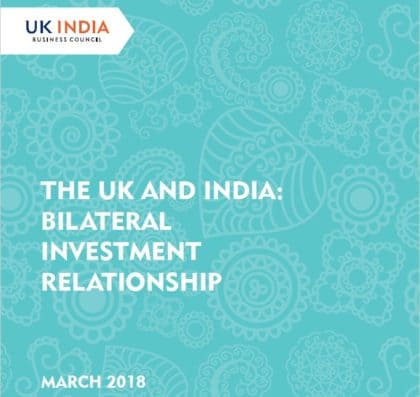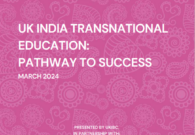UK-India Bilateral Investment Relationship
One of the cornerstones of the UK-India relationship is its strong investment linkages – the UK is the number one investor from the G20 in India, while India is routinely in the top 5 investors in the UK.

This relationship is responsible for the creation of almost one million jobs in total, and a range of other impressive benefits as described in the UKIBC’s latest report on UK-India bilateral investment.
As Mr Modi and Mrs May prepare for their bilateral in London this month, it feels right that we should reflect on this success and the reasons behind it.
Even though it is already very strong, the bilateral investment relationship is going to grow and evolve, for many reasons, which we cover in more detail in our recent report .
Investment into the UK will continue to grow as it is a large and growing market, with affluent consumers, a tech-rich industrial base, world-leading universities, a simple operating environment, and a demand for the skills and expertise that Indian companies can bring.
Investment into India will continue to grow as it is the world’s fastest growing large economy, it has an expanding middle class, a young demographic, an abundance of talented people, and it is fast becoming a global manufacturing hub. While these make India a natural investment destination, it’s efforts towards creating a business-friendly environment will be critical to its success in attracting further overseas companies.
Ease of Doing Business – much improved, and with big ambitions
One of the key promises of the Modi administration was to have India leap up the rankings in ease of doing business, in order to attract more foreign investment. As the UKIBC’s 2017 “Ease of Doing Business in India Report” indicated, there is still much work to do to get into the top 50 of the World Bank’s rankings. But India is already making massive strides, with the most recent rankings putting them in the top 100 (just). A rise of 42 places since 2014, and a huge jump of 30 on the 2016 placing. Impressive and encouraging.
However, the even more positive news is that there are no signs of the government resting on its laurels , as they continue their efforts to climb up the rankings. Continued reforms in taxation, increased investor protections, simplification of labour laws, and a reduction in red tape are all planned for 2018.
While these efforts tend to be made by the central government, individual states are becoming more proactive in implementing strategies that can attract more foreign investment to their state.
Indian states attracting business
Of course, the Union Government in Delhi is important, but much of the implementation is down to individual states. Many reforms have already been taken, particularly in the form of land and labour law changes and this is expected to continue.
Apart from core structural changes, states are also attempting to attract businesses by hosting investor summits to highlight their strengths and the opportunities available. Some are more successful than others. This proactive approach from states, according to NITI Aayog’s new state ease of doing business ranking, has seen the clear majority of states improve on a range of indicators measuring ease of doing business.
However, the ease of doing business is not the end all of what attracts investors, as the macroeconomic outlook is similarly as important – and the 2018 budget sent some positive signals to investors.
Strong outlook with budget
Investments in education, infrastructure projects, and a comprehensive healthcare insurance scheme, dubbed “Modicare”, are the key highlights of this ambitious budget – all good signs for onlooking foreign investors.
Additionally, the budget also included clear and bold labour law reforms, primarily the expansion of the use of contract workers to all sectors allowing for more flexibility for foreign investors looking to hire domestic workforce.
All these changes are promising, and it is reassuring that the Finance Minister has also committed to maintain a 3.3% fiscal deficit, showcasing the stability and fiscal discipline that foreign investors look for when making investment decisions.
Did the Brexit Referendum Dent the Indian Appetite for the UK?
The UK Government’s Department of International Trade’s report on inward investment in 2016-17 showed that Indian businesses are still hungry for the opportunities in the UK. Rather than the dip that some predicted, Indian businesses actually created over 11600 jobs in the UK, almost double that of the year before. This made India the second largest FDI job-creator in the UK that year.
India fdi into the uk in the last 5 years:
These results are a testament to both Indian companies international ambitions and to the underlying strength of the UK market.
Can things only get better?
With Commerce Minister, Suresh Prabhu, visiting London in April for the Joint Economic and Trade Committee meeting and now Modi’s visit mid-April, it is clear that there is a strong commitment from both countries to expand their investment and trade ties.
There is real confidence that the bilateral investment relationship will remain strong. At the same time, there is an expectation that it will evolve, with both countries developing a ‘digital-first economy’ strategy that will promote investment in the sectors of Industry 4.0.
With the Indian government expanding their ‘Digital India’ program and the UK government setting up its own Digital Strategy, both countries are looking to explore the potential of emerging technologies, such as AI, Robotics, IoT, and Big Data, making them areas ripe for investment – as well as being significant areas for innovation collaboration efforts, which we will explore in our next report, The UK and India: Bilateral Innovation Relationship.








